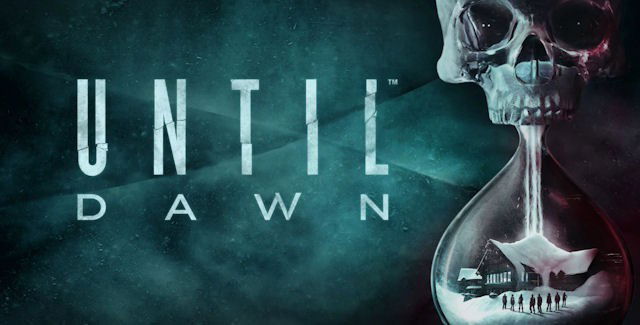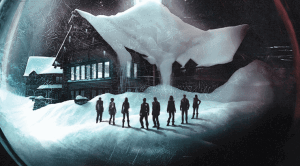Until Dawn is an Interactive Horror Flick, Where You Control the Outcomes
Until Dawn is a cliche horror flick that you get to interact with via quick time events, plus a choice and consequence system. Although the story’s connection from the first half to the second half, lacks congruity, the choice and consequence system makes the game engaging enough to play. Supermassive undeniably understands the formula of your classic slasher horror films.
Game Name: Until Dawn
Platform(s):PlayStation 4
Publisher(s): Sony Computer Entertainment
Developer(s): Supermassive Games
Release Date: August 25, 2015
Price: $59.99 ($30 Black Friday deal)
Until Dawn is a game you will enjoy if you are into horror films with the classic ingredients of flirty teenagers, over the top gore and sound that is abrupt enough to make you jump. While the story is not genuinely scary and the gameplay isn’t challenging, the QTE and choice/consequence mechanics make the games experience nerve-provoking enough to be engaged. Some of my friends who didn’t particularly care to watch me play some other games did not want me to stop playing Until Dawn in front of them.
Although I’m not particularly fond of horror films, this game undeniably mastered the recipe for one. I found the story to be a bit cheesy and most of the characters weren’t too likable, but I think they were intended to be quintessential adolescents. At one point the story diverted into a darker direction and although I enjoyed this left turn more than the original tone, it’s lack of cohesion to the first half of the story threw me off. However, my biggest issue with the game is it was way too short.
The characters are a group of eight stereotypical teenagers in an isolated cabin on top of a mountain surrounded by woods. Besides being there for privacy to engage in flirtatious and sexual behavior away from their parents, they are invited to the same cabin that their friends, two twin sisters named Hannah and Beth, mysteriously disappeared from a year ago. On a snowy day, the teenagers settled into this large, somewhat abandoned cabin that is full of hidden pathways and rooms. The snowy woods include wildlife such as deer, bears and wolves. The surrounding area also includes an abandoned mine, sanitarium, a morgue and a radio tower that gives access to a rather unreliable cable car, which is the only way out of the isolated mountain. Despite the isolation, aggressive wildlife, and the mysterious death of their twin friends a year ago; the teenagers continue to make pranks on each other throughout the game. Until Dawn gives you a sense that you’re constantly being watched, so the characters scaring each other can sometimes be nerve-racking. Other than that, it is difficult to see if the dialogue is intentionally meant to be funny, or just plays a satirical approach on the idiocy of teenagers in horror flicks.
The first half of the game presented itself like a parody of slasher horror films, but later the story took a more serious turn. Until Dawn begins with the characters trying to scare one another in this desolate area, but the second half of the game becomes darker and more eccentric, by introducing a new enemy called Wendigos, creatures that haunt the land surrounding the isolated cabin. Essentially you get to play one by one as each of the eight teenagers, but they typically split ways off into couples. Splitting up has historically been a routine for disaster in horror films, and soon after they aren’t only scaring themselves, but they become haunted by a masked psycho. In between chapters, you will be introduced to a character who is a psychiatrist named Doctor Hill. Doctor Hill will prompt you to answer a series of questions such as choosing between things you fear the most (example: roaches versus clowns) and which characters you dislike of the 8 teenagers. The answer to his questions have a small effect on the game where you will see clowns in random places as you progress, if clowns were your chosen fear. Initially, you don’t know who the psychiatrist is asking these questions to, since you speak to him through a first person view, but his role plays a major part in the beginning half of the story’s key plot. His relevance quickly dissipates when the story takes a sharp turn to a different direction. I particularly enjoyed this change, because it brought more of an edge to the story, but it was very tangential from the original tone.
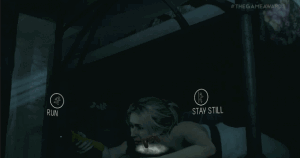
This update can be viewed in the menu and with a keen eye for detail, you can gather what the next steps should be for your desired outcome. Quick-time events play a big, and probably the most impactful role in Until Dawn. Some of the most thrilling moments are when you 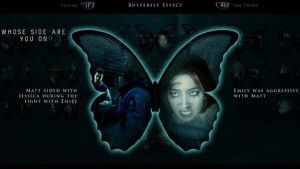
The motion control was pretty strict, so strict that sometimes I would have to literally hold my breath to avoid moving the controller. This feature really fueled the thrill and pulled me into the tense experience, because moving the controller could be the death of that character. However there were about two times that I had to place my controller on a flat surface to avoid the motion from activating and making me fail the QTE. This was especially troublesome due to the auto-save feature, therefore the only way to go back from failing, was to quit through the PlayStation Home or reloading a back up save from cloud storage or a USB drive. It isn’t until the end of your first play through that you have the chapter select option.
Overall, the gameplay has very simple puzzle solving, such as interacting with a lighter that is glowing in your environment and use it to ignite a 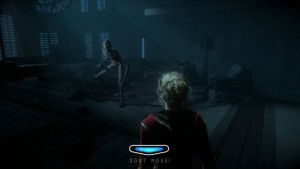
Until Dawn’s scenery is a snowy mountain that is as breath-taking as it is creepy. This environment isn’t one you can explore because the game is extremely linear. The camera sometimes focused at abnormal angles such as viewing the characters from a far away corner, which can obscure where you need to go and make certain pathways and some items difficult to see. Perhaps the game being linear aided the odd camera angles because it would serve as a barrier for when I reached as far as I can go right or left. I suspect the camera angles were also unconventional to make an enemies sudden appearance more startling.
The character designs are modeled from actual actor’s and sometimes their facial expressions appear exaggerated, and their body movements peculiar. The facial expressions appeared unusual in the sense that their mouths would be left open for too long or the dialogue sound wouldn’t match the characters mouth movement. The actor’s chosen to voice the adolescent characters did a very good job in impersonating stereotypical teenagers. Nonetheless, words or phrases were too forced in conjunction with the characters mouth movement.
Until Dawn’s soundtrack was done by Jason Graves, which gave well to the tone of panic and did a very good job of creating atmosphere and pressure. I presume that people jump out of their seat and get scared during horror movies, not so much because of the image on screen, but more because of the loud and abrupt sound. Until Dawn’s sound definitely includes these intrusive and unexpected sounds, causing one to startle. The “Killer Theme” was played when you were being chased by the masked psycho, and it’s tone was reminiscent of the Jason Voorhees theme.
Too Short to Be That Price
Summary
I believe Until Dawn reached it’s ultimate goal of piggy backing off of horror movies and capturing the core ingredients to make the player feel as much intensity as possible when making quick decisions during daunting moments, such as being chased by a psycho. If you are a big fan of horror movies, you will love this game.
While a game’s easy mechanics can be a breaking point for some gamers, the simplicity in Until Dawn definitely works for it’s purpose. You don’t have to be a seasoned gamer to enjoy this game, nor do you have to be the one on the controller to enjoy the game. Instead of having a movie night, why not just pop in Until Dawn?
This game may feel like a very long horror movie experience, but for a video game, it is very short. It took me less than 20 hours to platimum the game, and that is counting multiple playthroughs. Due to this, I don’t think it is fair to have launched Until Dawn at $59.99, and I encourage people to wait for a price drop to get their money’s worth or borrow it from a friend.
Pro’s:
- Choices have consequences that affect the game
- Eerie environment
- QTE mechanics bring thrill to the horror film theme
- Multiple playthroughs offer different experiences and scenes
Con’s:
- Somewhat tangential story
- Cliche horror movie theme
- Too short
-
Graphics - 6/106/10
-
Game-play - 7/107/10
-
Audio/Sound - 6/106/10
-
Value - 5/105/10


